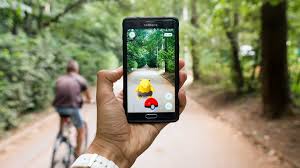The shift to remote and hybrid learning has brought many challenges — from declining student engagement to limited access to hands-on materials. But what if there was a way to bring interactivity, visualization, and real-time feedback into virtual classrooms?
Enter Augmented Reality (AR) — a powerful tool that’s helping educators overcome the limitations of remote learning by creating immersive, interactive experiences right from home or school.
In this article, we’ll explore how AR is bridging gaps in remote education , why it works so well for online learning, and what tools you can start using today to transform your digital classroom.

What Is Augmented Reality?
Before diving into its impact on remote education, let’s define what Augmented Reality (AR) really means.
AR enhances the real world by overlaying digital content — such as images, videos, or 3D models — onto a user’s environment using devices like smartphones, tablets, or AR glasses. Unlike Virtual Reality (VR), which creates an entirely artificial environment, AR blends digital elements with the physical world, making it ideal for classroom use.
This makes AR especially valuable in remote education , where students may feel disconnected from their lessons or peers.
The Rise of Remote Learning
Remote learning has become a key part of modern education — especially after the pandemic accelerated its adoption globally.
According to recent studies:
- Over 60% of K–12 schools now offer some form of hybrid or remote instruction.
- Nearly 45% of college students have taken at least one course online.
While remote learning offers flexibility, it also presents unique challenges:
- 📉 Lower student engagement
- 🧠 Difficulty visualizing complex topics
- 💬 Limited peer interaction
- 🏫 Lack of hands-on learning opportunities
These issues often lead to disengagement, reduced comprehension, and lower academic performance — especially among younger learners.
That’s where AR comes in.
How AR Addresses Remote Learning Challenges
Here are some of the most effective ways AR helps bridge the gaps in remote education:
1. Brings Lessons to Life
Instead of reading about scientific concepts or historical events, students can experience them in interactive 3D environments .
For example:
- Explore the human body system by system
- Walk through ancient Rome via virtual field trips
- Conduct chemistry experiments without dangerous chemicals
This level of interactivity keeps students engaged and makes abstract ideas tangible.
2. Supports Visual and Kinesthetic Learners
Not all students learn best through lectures and text. Many benefit from seeing, touching, and interacting with material — something traditional online learning struggles to provide.
AR delivers visual explanations , hands-on simulations , and real-time interaction , helping diverse learners grasp difficult topics more effectively.
3. Encourages Active Participation
One of the biggest issues with remote learning is passive engagement. Students log in, watch a lecture, and log out — with minimal interaction.
AR changes that dynamic by turning lessons into exploratory experiences . Students aren’t just watching — they’re doing.
Whether it’s solving puzzles, exploring ecosystems, or building molecules, AR encourages students to stay involved and curious.
4. Offers Real-Time Feedback
Many AR platforms include instant feedback mechanisms, allowing students to see their progress and correct mistakes immediately.
This kind of adaptive learning is crucial in remote settings where teachers may not be available for immediate support.
5. Promotes Collaborative Learning
Even though students may be physically apart, AR allows them to work together in shared digital spaces.
Some AR tools enable group projects, team-based challenges, and peer-to-peer collaboration — keeping students connected and motivated.
Benefits of Using AR in Remote Classrooms
Let’s break down some of the most impactful benefits AR brings to remote learning:
| Benefit | Description |
|---|---|
| 🧠 Enhanced Visualization | Abstract ideas become tangible through 3D models and interactive visuals. |
| 🎯 Better Student Motivation | Gamified AR lessons increase attention span and participation. |
| 🧑🏫 Inclusive Learning | Supports diverse learning needs, including special education and language learners. |
| 💻 Cost-Effective Tools | Reduces reliance on expensive equipment and lab setups. |
| 📱 Scalability | Works across subjects, age groups, and learning environments. |
These benefits suggest that AR has the potential not only to enhance current remote learning systems but also to revolutionize them.
Top AR Tools That Improve Remote Learning
Here are some of the best AR platforms currently helping educators deliver high-quality instruction remotely:
| Tool | Best For | Key Features |
|---|---|---|
| Merge Cube | STEM Education | 3D object manipulation, tactile learning |
| zSpace | Advanced STEM | Hybrid AR/VR platform for in-depth exploration |
| Adobe Aero | Custom Content Creation | Create personalized AR lessons without coding |
| HP Reveal (formerly Aurasma) | Textbook Enhancement | Turn static pages into interactive AR experiences |
| CoSpaces Edu | Coding & Creativity | Build AR worlds and stories; supports Blockly and JavaScript |
| Google Expeditions (Legacy) | Virtual Field Trips | Explore global landmarks and natural wonders |
| SkyView® Explore the Universe | Astronomy | Identify stars, planets, and satellites in real time |
| Anatomy 4D | Biology | Explore human body systems in detail |
| Elements 4D | Chemistry | Simulate chemical reactions safely |
| Quiver | Elementary Learning | Coloring pages come to life with AR |
Most of these tools are easy to use, compatible with common devices, and many offer free versions — making them accessible for most schools and remote instructors.
Real-World Examples of AR in Remote Classrooms
Let’s look at a few real-life examples of how AR is being used to improve remote learning:
🔬 Science Class: Virtual Dissections
Instead of using actual frogs, biology students can perform dissections in AR. This eliminates ethical concerns, reduces costs, and allows multiple attempts — increasing both engagement and understanding.
🗺️ History Class: Time Travel Through AR
Students can “stand” beside historical figures, walk through ancient civilizations, or witness key events unfold before their eyes — all from the safety of their homes.
📐 Math Class: Geometry in 3D
Geometry becomes more engaging when students can manipulate 3D shapes and visualize formulas in action. AR apps allow them to rotate, zoom, and interact with geometric figures like never before.
These examples show that AR isn’t just a futuristic idea — it’s being applied right now to make remote learning more engaging, inclusive, and effective.
How Teachers Can Implement AR in Remote Teaching
You don’t need to be tech-savvy to start using AR in remote teaching. Here’s a simple step-by-step guide:
Step 1: Define Your Learning Goals
Identify what you want students to learn. Choose AR tools that align with those objectives.
Step 2: Start Small
Begin with one or two apps that match your subject area and class needs. Many offer free trials or limited versions.
Step 3: Train Yourself
Use tutorials and demo videos to become familiar with the app before introducing it to students.
Step 4: Integrate Into Lessons
Find ways to incorporate AR naturally into your existing curriculum. For example:
- In English, animate story settings.
- In geography, explore topographical maps.
- In social studies, simulate ancient trade routes.
Step 5: Gather Feedback
Ask students how they felt about using AR. This will help you refine future lessons and choose better tools.
Challenges & Solutions
While AR offers many benefits, there are still some hurdles to overcome:
💸 High Costs of Hardware
Some advanced AR tools require special headsets or devices that may be too expensive for many schools.
Solution: Start with free apps that work on existing devices like smartphones and tablets.
🛠️ Technical Limitations
Not all schools have the infrastructure or bandwidth to support high-quality AR applications.
Solution: Advocate for grants or funding for EdTech initiatives.
📚 Teacher Training
Educators may feel overwhelmed by new technology without proper training or support.
Solution: Provide professional development workshops and peer mentoring.
The Future of AR in Remote Education
As AR technology continues to evolve, we can expect even more innovative applications in remote learning:
👓 Wearable AR Devices
Lightweight AR glasses will replace tablets and smartphones in classrooms, allowing hands-free interaction with digital content.
☁️ Cloud-Based AR Learning
Cloud computing will enable seamless, real-time access to AR content without requiring powerful local devices.
🤖 AI Integration
AI-powered tutors embedded in AR environments will offer real-time guidance, adapting lessons to each student’s progress.
🌐 Global Collaborative Learning
Students from different countries will join the same AR environment to collaborate on projects, breaking down geographical barriers.
Final Thoughts: Embrace AR in Your Remote Classroom
The rise of augmented reality in education is not just a trend — it’s a transformation in how we teach and learn. From elementary classrooms to university lecture halls, AR is helping students visualize complex topics, stay engaged, and take ownership of their learning journey — no matter where they are.
If you’re an educator ready to embrace innovation, there’s never been a better time to explore AR. With the right tools and strategies, you can turn your remote classroom into a dynamic, interactive learning hub where every lesson comes to life.
So why wait? Start experimenting with AR today and unlock a world of possibilities for your students.
Frequently Asked Questions (FAQ)
Q1: How does AR improve remote learning?
A1: AR boosts engagement, improves retention, encourages self-directed learning, and makes abstract concepts tangible through interactivity.
Q2: Can AR be used in online classes?
A2: Yes, AR is increasingly used in remote and hybrid learning environments to provide hands-on experiences without physical constraints.
Q3: Are AR tools expensive for schools?
A3: While some advanced systems can be costly, many AR apps are free or low-cost and work on existing devices like smartphones and tablets.
Q4: What subjects benefit most from AR?
A4: Science, math, history, and language learning benefit greatly from AR, but it can be applied across nearly all subjects.
Q5: How can teachers start using AR in remote teaching?
A5: Begin by identifying learning goals, choosing the right app, testing it yourself, and gradually integrating it into your lessons.
You can also visit here for more info- https://dstrendmedia.com/2025/05/16/transform-science-labs-with-augmented-reality/

